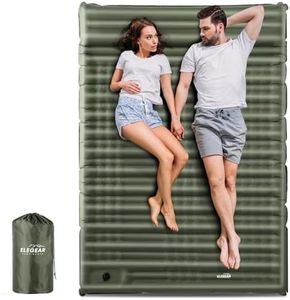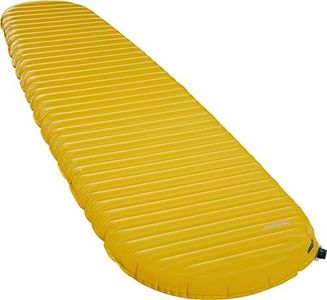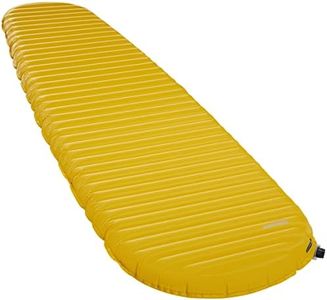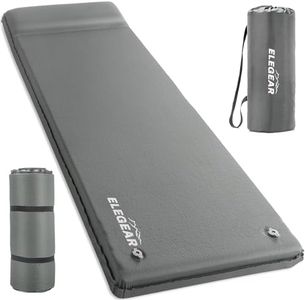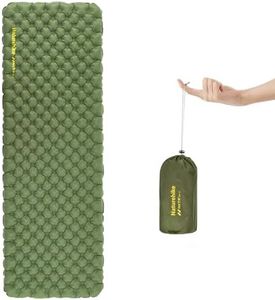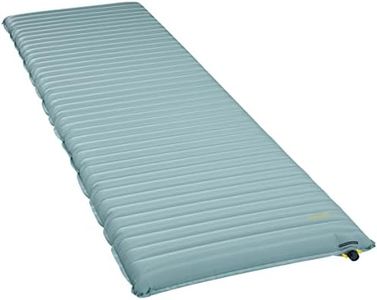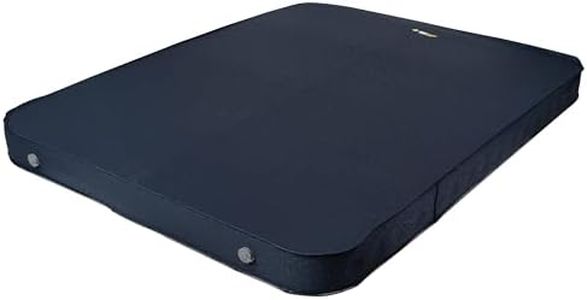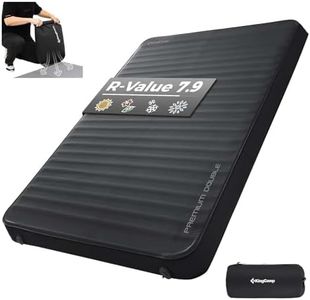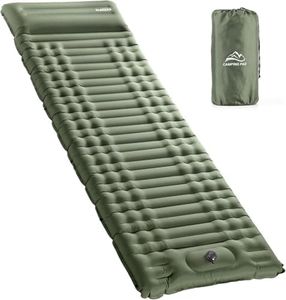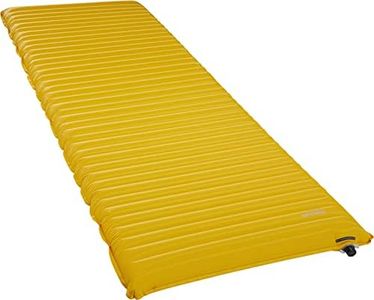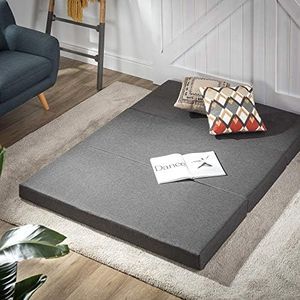We Use CookiesWe use cookies to enhance the security, performance,
functionality and for analytical and promotional activities. By continuing to browse this site you
are agreeing to our privacy policy
10 Best Camping Mattress
From leading brands and best sellers available on the web.Buying Guide for the Best Camping Mattress
Choosing the right camping mattress can greatly improve your sleeping comfort during outdoor adventures. The ideal mattress balances support, portability, and durability, fitting your style of camping—whether you're backpacking, car camping, or spending nights in rough conditions. It's important to consider how you'll be using the mattress, the environment you'll be in, and your personal preferences for comfort and convenience. Understanding the key specifications will help you find a mattress that meets your specific camping needs.Type (Foam, Air, Self-inflating)This spec refers to the build and design of the mattress. Foam mattresses are made from dense sponge-like material and are rugged, offering insulation without needing to inflate but can be bulky. Air mattresses require inflation and often provide more cushion and adjustable firmness, but usually need a pump and can be punctured. Self-inflating mattresses combine open-cell foam and air, making them a balance between cushioning, insulation, and easy set-up. Choose based on your priorities: foam for simplicity and durability, air for comfort and compactness, and self-inflating for a mix of both. Backpackers often favor lighter, more compact options, while car campers might prioritize comfort.
Weight and Pack SizeThis tells you how heavy and large the mattress will be when packed. Lighter and smaller options are ideal if you'll be carrying everything on your back, as they save space and reduce weight. For car or base camping where carrying is limited, heavier and bulkier mattresses are acceptable as they often provide more comfort. Select a weight and pack size that matches your travel method and available space.
ThicknessThickness measures how tall the mattress is when inflated or laid out, which affects both comfort and insulation from the ground. Thinner mattresses (1-2 inches) are lighter and pack smaller, but may feel firmer and less cushy. Medium thickness (2-3 inches) offers a balance of comfort and portability. Thicker mattresses (over 3 inches) provide the most cushioning, which is great for side sleepers or those sensitive to hard ground but take up more space. Your sleeping position and preference for softness should guide this choice.
R-Value (Insulation)The R-value indicates how well the mattress insulates you from the cold ground. A low R-value (less than 2) is suitable for warm-weather camping, while a moderate R-value (2–4) works in spring and fall. High R-values (above 4) are necessary for winter or chilly conditions. If you're a cold sleeper or expect to camp in cooler climates, prioritize higher R-values to stay warm at night.
Durability and MaterialDurability relates to the toughness of the outer fabric and how well the mattress resists punctures and wear. Thicker, higher-denier fabrics are tougher but heavier, while lighter materials save weight at the cost of ruggedness. If you often camp on rough ground or expect heavy use, look for mattresses with tougher material. For backpacking or occasional use, lighter materials may be sufficient.
Inflation MethodThis tells you how the mattress is set up – either by mouth, built-in pump, external pump, or self-inflating. Self-inflating mattresses are the easiest, filling with minimal effort, while air mattresses often need either manual or electric pumps. Consider how much time and effort you’re willing to spend setting up your sleeping arrangement, especially after a long day outdoors.
Length and WidthThis measures the mattress dimensions to ensure a good fit for your body size and your tent's floor space. Standard lengths suit people up to about 6 feet tall, but longer versions are available. Width can be standard (regular), wide, or extra wide for more space. Pick a size based on your height, sleeping habits—like rolling or sprawling—and tent layout.

